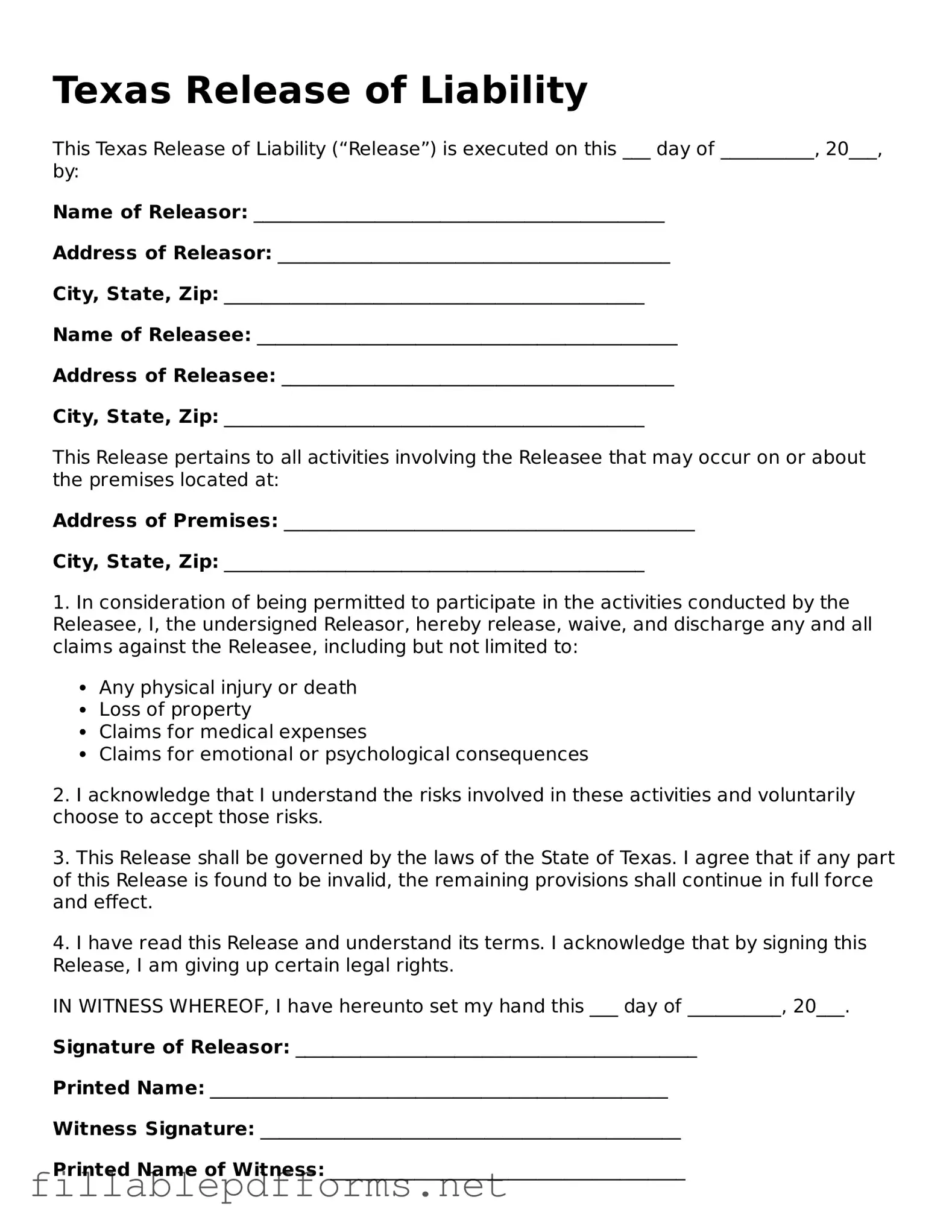In the realm of personal activities, particularly those involving potential risks, the Texas Release of Liability form serves as a vital tool for individuals and organizations alike. This document is designed to protect parties from legal claims arising from injuries or damages that may occur during specific events or activities. By signing this form, participants acknowledge the inherent risks involved and agree to waive their right to hold the organizers or providers liable for any accidents that may occur. This proactive measure not only fosters a sense of responsibility among participants but also helps organizations mitigate potential legal disputes. It is crucial to understand that while the form offers a layer of protection, it must be drafted clearly and comprehensively to ensure its enforceability. Key elements typically included in the form are a detailed description of the activity, an acknowledgment of risks, and a statement of voluntary participation. The nuances of this document can vary based on the specific context in which it is used, making it essential for individuals and organizations to tailor the form to their unique circumstances.
